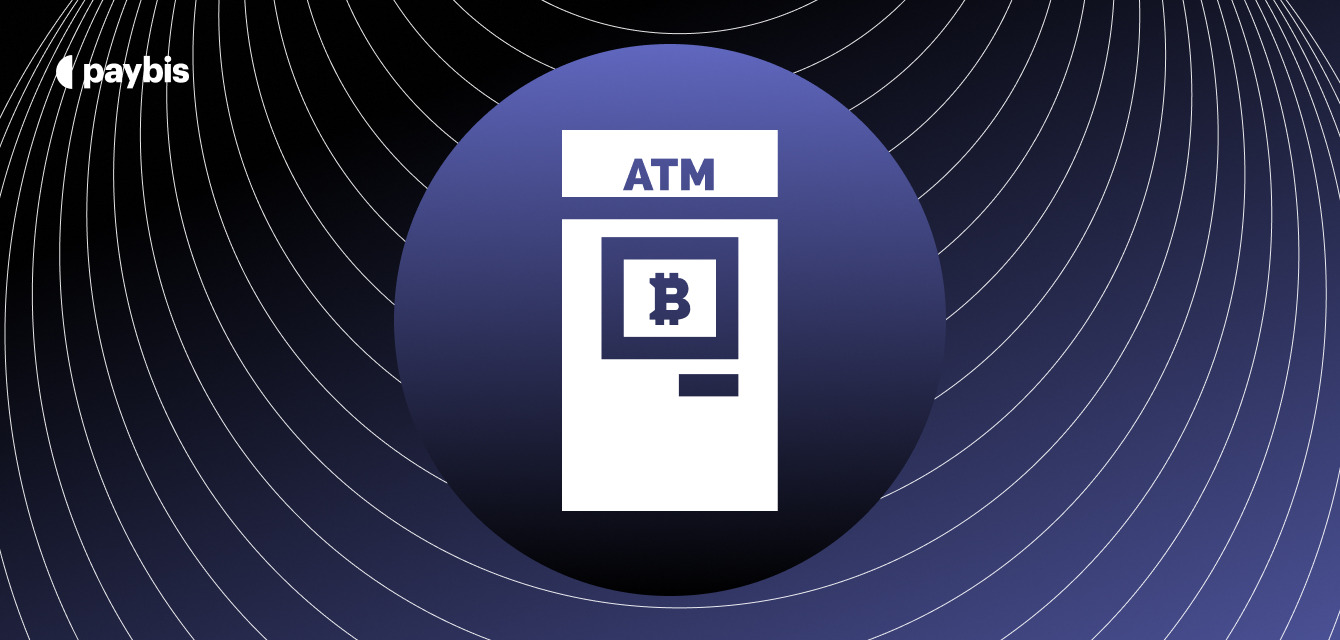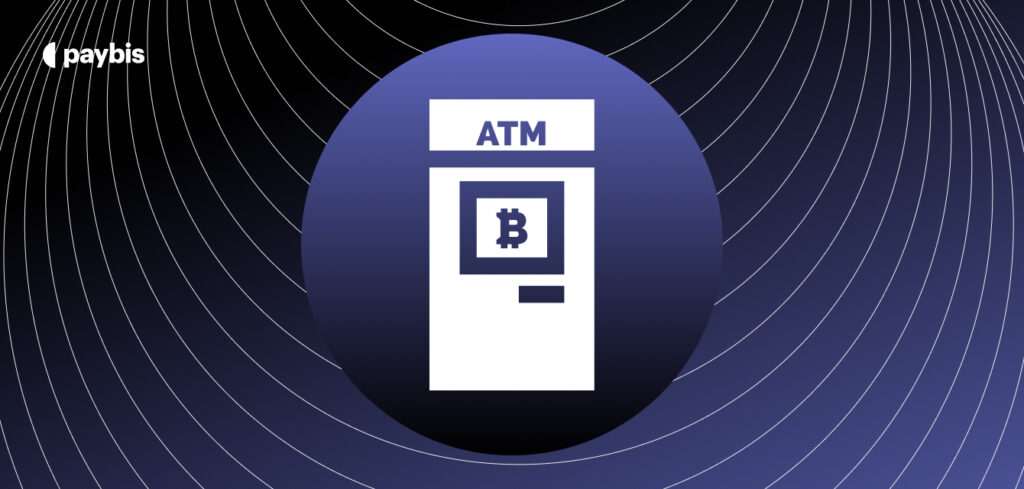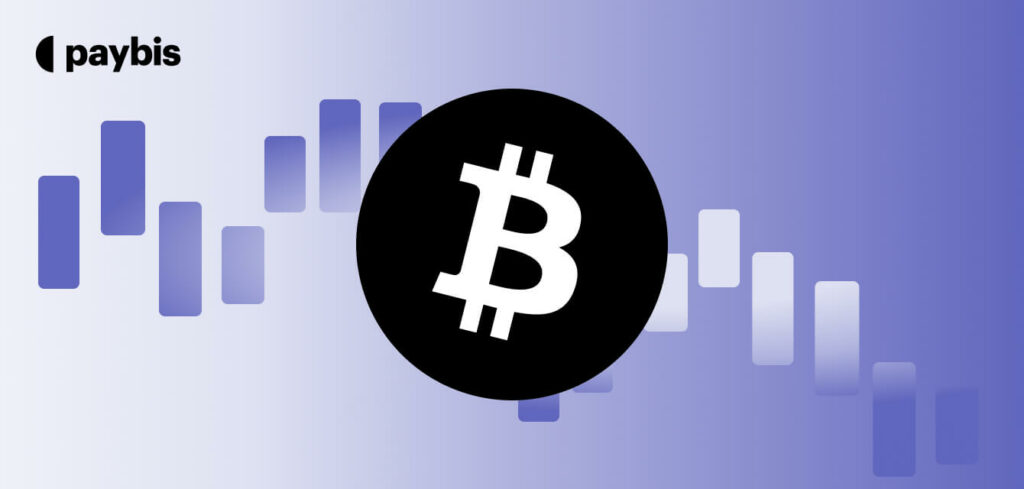How Do Bitcoin ATMs Work?
Bitcoin ATMs present a fascinating contradiction. Bitcoin was born as a decentralized, digital alternative to traditional currencies. Yet, these ATMs offer a tangible, physical way to interact with this often intangible financial concept.
For some, they provide an entry point into the world of cryptocurrency investment. Others living in regions with unstable banking systems may find them a more reliable way to store and transfer value. The reach of these machines is growing, particularly in countries like El Salvador, where Bitcoin is now legal tender.
This article explores Bitcoin ATMs, how they work, and how to use them.
Table of contents
What Is A Bitcoin Machine (ATM)?
A Bitcoin ATM is a physical kiosk that allows individuals to purchase Bitcoin and other cryptocurrencies using cash or debit/credit cards.
Unlike traditional ATMs, which connect to a bank account, Bitcoin ATMs link directly to a cryptocurrency exchange through the internet, facilitating real-time Bitcoin transactions.
In layman’s language, Bitcoin ATMs resemble traditional automated teller machines, but with a twist — they allow users to engage directly with cryptocurrencies, providing a physical point of interaction for digital transactions.
These machines provide a convenient alternative to online exchanges, allowing users to buy and sometimes sell Bitcoin using traditional cash. For those less familiar with digital wallets and trading platforms, Bitcoin ATMs present a more accessible entry point into the cryptocurrency market.
Some ATMs also enable the reverse process — converting Bitcoin into fiat currency, which can be withdrawn in cash. Hence, they are are categorized into two:
- One-way ATMs: These machines only allow users to buy Bitcoin. They are more common and typically found in retail locations like malls or cafes.
- Two-way ATMs: These allow users both to buy Bitcoin and sell it for fiat currency. Two-way ATMs are less common but are increasing in number due to their added convenience.
Learn more about How to Cash Out Bitcoin
How Bitcoin ATMs Work
There are three integral parts to a Bitcoin ATM:
- Physical kiosk: Bitcoin ATMs are standalone machines that look like traditional ATMs.
- Crypto Exchange or other liquidity source: These machines connect to a cryptocurrency exchange to obtain live rates and facilitate the conversion between cash and Bitcoin. Alternatively, they may connect to a different source of liquidity and use decentralized oracles for prices.
- Blockchain integration: Transactions are processed on the blockchain, the digital ledger that keeps track of all cryptocurrency transactions.
How To Use A Bitcoin ATM: A Step-by-Step Guide
Bitcoin ATMs might seem intimidating initially, but the process is surprisingly straightforward. They are meant to be used by the general population, after all.
Account Creation
Before you can use a Bitcoin ATM, you might need to create an account with the ATM operator. This often involves providing basic information and verifying your identity.
Some ATMs may allow transactions with only minimal verification, such as a phone number.
Finding an ATM
The easiest way to locate a Bitcoin ATM near you is to use online resources like Coin ATM Radar. This website lets you search for ATMs based on your location.
The Buying Process
- Initiate Transaction: At the ATM, select the “Buy Bitcoin” option.
- Provide Wallet Address: You’ll need a Bitcoin wallet to receive the purchased coins. Most ATMs will prompt you to scan a QR code of your wallet address.
- Insert Cash: The machine will indicate how much cash to insert based on the current Bitcoin price.
- Confirm and Receive: Verify the transaction details, then wait for the Bitcoin to arrive in your wallet. This usually takes a few minutes. The ATM will issue a receipt as proof of your transaction.
The Selling Process (for bidirectional ATMs)
- Initiate Sell Transaction: Choose the “Sell Bitcoin” option.
- Send Bitcoin: The ATM will provide a unique address. Send the desired amount of Bitcoin from your wallet to this address.
- Receive Cash: Once the transaction is confirmed on the blockchain, the ATM will dispense your cash.
Security Challenges Associated With Bitcoin ATMs
Most reputable Bitcoin ATMs tend to be safe for users. They are usually kept in places where there is a degree of security.
Read More Are Bitcoin ATMs Safe
But they are not free of security concerns. Below are a few security challenges that Bitcoin ATM operators have to take care of.
Theft and Vandalism
Bitcoin ATMs, often containing significant amounts of cryptocurrency or cash, are attractive targets for theft and physical damage.
Operators need to carefully consider the placement of their ATMs, utilizing locations with surveillance and other security measures to deter criminal activity.
Tampering and Skimming Devices
Criminals can install hardware skimmers or other malicious devices to intercept transaction data or manipulate the machine’s software.
Tamper-proofing, regular maintenance checks, and transaction monitoring can help mitigate these risks.
Software Vulnerabilities
Outdated software and operating systems often contain known security vulnerabilities that hackers can exploit. Regularly updating firmware, running vulnerability scans, and patching software promptly is key for maintaining a secure machine.
Vulnerabilities can exist in the Bitcoin ATM’s software code itself. Rigorous coding practices, including code reviews and security testing, should be a part of the ATM’s development and maintenance to minimize potential exploits.
Money Laundering and Compliance Concerns
Some Bitcoin ATMs offer a degree of anonymity compared to traditional banking. This can be exploited for money laundering or illicit activities. Strict adherence to KYC and AML regulations is essential, requiring user identification and transaction limits.
Pros and Cons Bitcoin ATMs
Pros |
Cons |
|
Allows instant purchase of Bitcoin. |
Fees can be significantly higher than online exchanges. |
|
Accessible physical locations in many cities. |
Not as widely available as traditional ATMs. |
|
User-friendly interfaces make transactions simple. |
Mostly found in major urban areas. |
|
No need for a bank account or credit check. |
May require ID verification due to regulatory compliance. |
|
Can provide more anonymity than online transactions. |
Regulations can vary significantly by region. |
|
Users receive Bitcoin directly to their wallets. |
Potential target for theft or fraud. |
|
No need to wait for bank processing times. |
Physical security needed for the machine itself. |
|
Enables buying Bitcoin with cash. |
Machines can suffer downtime or malfunctions. |
|
Useful for those preferring cash or without bank access. |
May not always support all Bitcoin wallet types. |
|
Some offer additional services like selling altcoins. |
Often have caps on how much Bitcoin you can buy/sell. |
|
May allow bill payments or mobile top-ups. |
Limits can be restrictive for larger transactions. |
List of Top Crypto ATM Providers
There are many crypto ATM providers. Best one crypto dispensers for you depends on a few variables:
- Availability: The location of ATMs is critical. Check the provider’s website for a map of ATM locations near you.
- Supported cryptocurrencies: Not all ATMs support the same range of cryptocurrencies. Ensure the provider supports the coins you want to buy/sell.
- Fees: Transaction fees can vary between providers. Compare before choosing an ATM.
Bitcoin Depot
One of the largest crypto ATM operators globally, with a significant presence across the United States.
It is known for fast transaction speeds and a relatively straightforward user interface. Many machines offer two-way functionality (buy and sell crypto).
Bitcoin Depot focuses on major coins like Bitcoin, Ethereum, Litecoin, and Bitcoin Cash.
CoinFlip
Another major player known for its user-friendly interface and wide geographic reach.
CoinFlip emphasizes user-friendliness and offers phone-based customer support. Provides educational resources on crypto for users.
It supports a wider selection of coins, including Bitcoin, Ethereum, Litecoin, Chainlink, Dogecoin, etc.
General Bytes
A leading manufacturer of Bitcoin ATMs, providing both hardware and software solutions. Many operators worldwide use their machines.
These machines can be highly customizable depending on operator preferences. Robust security features are a focus.
General Bytes ATMs are capable of supporting a vast range of cryptocurrencies depending on the operator’s configuration.
Bitstop
A rapidly growing ATM provider focused on convenience and accessibility.
Easy-to-use platform. They partner with LibertyX, allowing ATM users to purchase Bitcoin with cash at numerous retail locations, even without a Bitstop machine nearby.
Bitstop primarily supports Bitcoin.
Coinsource
A well-established ATM operator with a reputation for strong compliance practices.
Coinsource focuses on compliance and security, making them a good choice in areas with stricter regulations.
This ATM is dedicated to dispensing Bitcoin and not other cryptocurrencies.
Conclusion
Bitcoin ATMs offer an interesting intersection between the digital cryptocurrency space and the familiar world of cash transactions.
While they provide convenience and accessibility for some, it’s important to remember that they come with their own risks and limitations. Fees can be higher than an online crypto exchange, security remains a concern, and regulations continue to evolve.
Alternatively, you can skip the hassle and buy Bitcoin with credit card using Paybis.
As with any financial transaction, it’s crucial to do your research. Understand the fees, research the ATM provider’s reputation, and stay informed on your local regulations before diving into the world of Bitcoin ATMs.
Found this insightful? Read more Bitcoin articles on the Paybis blog.
FAQ
How does a Bitcoin ATM work?
Bitcoin ATMs connect to liquidity sources, like crypto exchanges, and your digital wallet. You insert cash, the ATM converts it to Bitcoin at the current market rate (plus any applicable fee), and sends the Bitcoin to your wallet. Some ATMs allow you to sell Bitcoin for cash too.
How do I use a Bitcoin ATM for the first time?
You’ll need a cryptocurrency wallet to store your Bitcoin. At the crypto ATM, follow instructions on the screen. You’ll typically need to verify your identity, enter your wallet’s address (often via QR code), and insert cash.
How much does a Bitcoin ATM charge for $100?
Fees vary greatly between providers, but generally expect 5-15% on top of your $100 purchase. Always check the fee structure before using the ATM, as it’s clearly displayed.
What is the minimum deposit at a Bitcoin ATM?
Minimum deposits vary. Some allow small purchases of $20 or less, others have higher minimums. The ATM will display the minimum allowed before you proceed.
Are crypto ATMs legal?
Legality depends heavily on your location. Many countries have regulations for crypto ATMs, focusing on anti-money laundering (AML) and Know Your Customer (KYC) rules. Research the specific regulations in your area.
Disclaimer: Don’t invest unless you’re prepared to lose all the money you invest. This is a high‑risk investment and you should not expect to be protected if something goes wrong. Take 2 mins to learn more at: https://go.payb.is/FCA-Info




